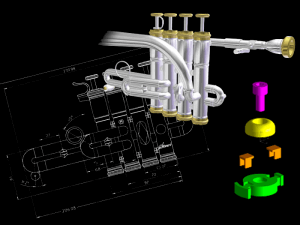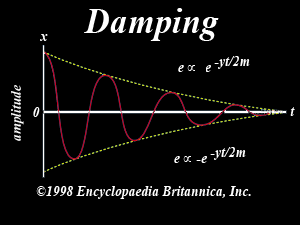The by-products of acoustic science are all around us.
From Bose Noise Canceling Headphones to Shazam song recognition to THX balanced sound systems in movie theaters, we all benefit from the work of amazing scientists going back as far as Pythagoras.
Many have defined the mouthpiece and trumpet dimensionally (cup depth, bell size, etc.) and others have delved into the acoustic science of air column resonances. Most notably Helmholtz (1863), Blaikley (1878), Bouasse (1929), Benade (1960), Kent (1961), Backus (1969), Cardwell (1970), Smith (current), and Bast (current), to name a few.
Although it is valuable to know dimensional measurements of things like bore size, it is acoustic parameters and studies that are relevant to improving mouthpiece and trumpet design.
Acoustics are what we study, ascribe to, and apply at Stomvi USA.
The most important aspect of trumpet design is the air column. Simply put, the air column is the shape of the air inside the tubes of a trumpet. As simple as it sounds, designing the correct shape is complicated.
Acoustically, the interior shape should ensure that all the notes correspond in pitch to Mother Nature’s Harmonic Series. When this is achieved the harmonics reinforce each other (sympathetic vibrations) resulting in a full, resonant sound that is easy to play in all registers.
THIS ALLOWS YOU TO USE YOUR AIR EFFICIENTLY.
Outside aspects such as bracing, bell skirt diameter, etc. affect the mechanical damping and are secondary to the fundamental air column design.
It is the inside shape of the trumpet that counts where sound and playability are concerned.
In the context below proper intonation does not refer to playing in tune with an ensemble.
It refers to the mouthpiece and trumpet system being in tune relative to itself.
Intonation
The most important aspect of trumpet and mouthpiece design is intonation. Through acoustic science and decades of experience we have developed instruments and mouthpieces with impeccable intonation.
Doing so results in:
- An easy upper register
- Maximum endurance
- Even slotting and response through all registers
- A full, resonant sound full of harmonics
One of the easiest ways to determine how in tune a mouthpiece/trumpet system is is to listen to the timbre of different notes: If the timbre changes from note to note as you play a phrase or scale, it means that the partials are interacting differently. This is caused by incorrect relative intonation. This causes a different mix of harmonics for each note which causes the timbre changes. In other words, the harmonic engagement is uneven which results in undesirable timbre changes.
Damping
Damping affects how easily a resonant system responds. Too little damping and it’s difficult to start the note. Too much and the sound is compromised. We vary the damping so each instrument and mouthpiece has a balance between response and sound. There are two types of damping:
This is mainly determined by the air column (bore size and shape). By fine tuning the air column, we can achieve the best balance of intonation and playability.
Determined by mostly exterior factors such as weight distribution, bracing, and valve caps, mechanical damping is an important consideration in trumpet and mouthpiece design.
A well in tune system will have consistent timbre throughout the range of the instrument, and pitch that is stable at all playing levels. This consistency in sound, along with being more pleasing to listen to, will be easier to play leading to increased range and endurance.
When the Intonation and Damping are “dialed in” for the player,
the mouthpiece and trumpet are “Simply easier to play!”
Ergonomics
An instrument must feel comfortable in your hands. We have spent many years designing instruments that are comfortable to hold no matter what size your hands are. All slides are hand fit to ensure smooth, trouble free operation. We can customize virtually any aspect of the horn such as finger hook or ring placement to further accommodate your needs.
The best sound and playability results when the mouthpiece and instrument are as in tune with each other (and thus Mother Nature’s Harmonic Series) and matched to the player.
Flex Alloy
Flex Brass is a proprietary alloy and acoustic treatment used for our Flex Mouthpieces and some of our instruments. Developed by Vicenté Honorato (founder of Stomvi, Spain) in 2006, Flex Brass is extremely resonant and transfers energy very efficiently. Along with our advanced acoustic designs, Flex Brass enhances the resonance and ease of play of many of our instruments and all of our Flex Mouthpieces.







